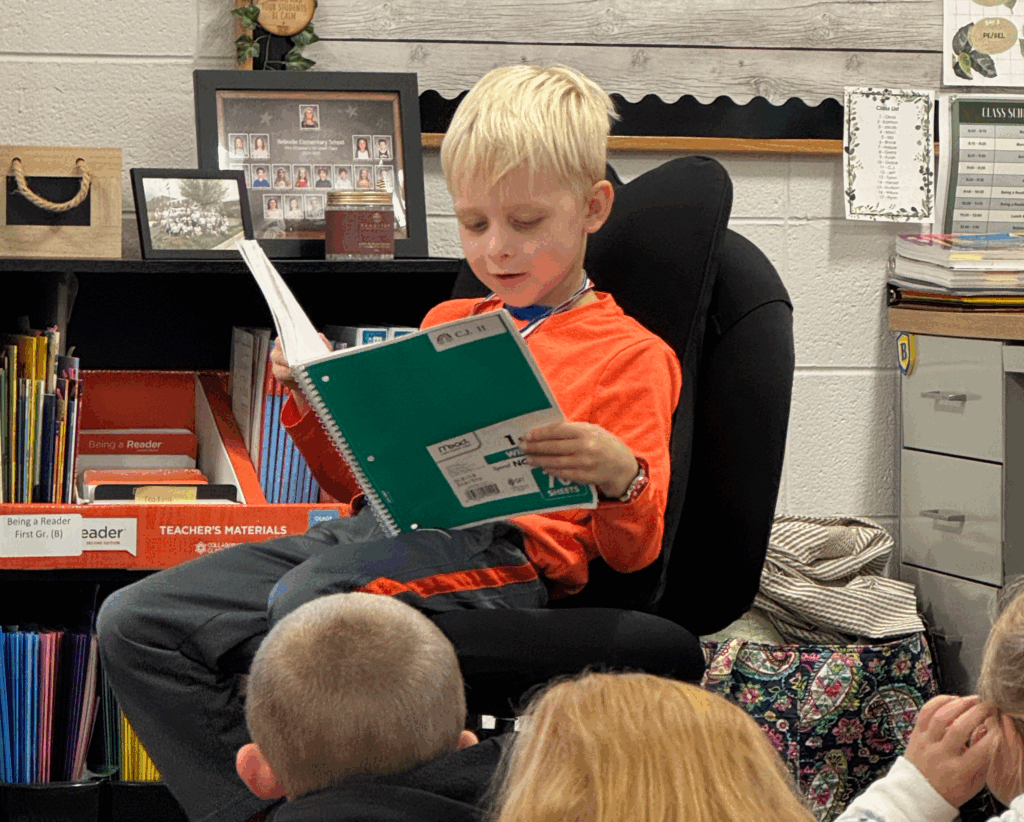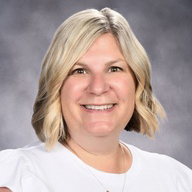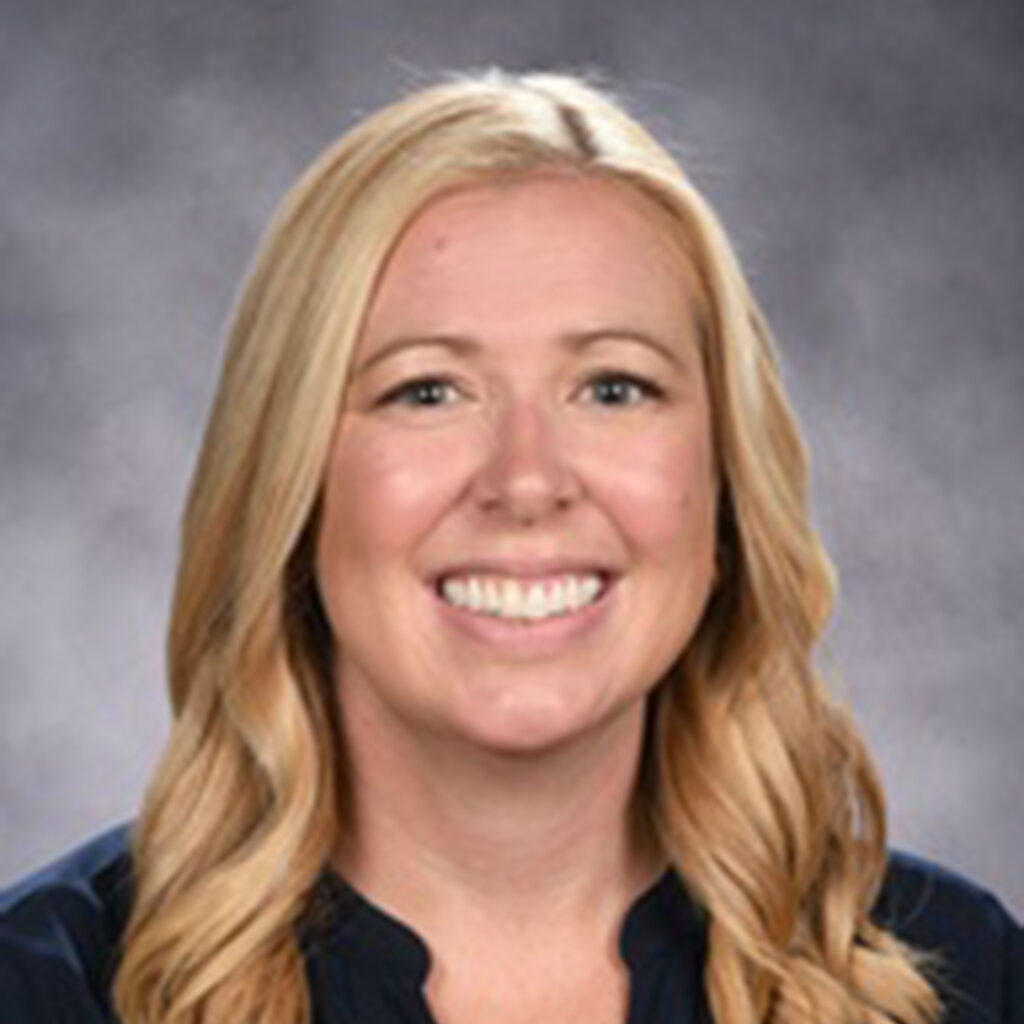
To ensure consistency and alignment across Pre-K–Grade 12, Belleville School District adopted Collaborative Classroom’s core K–5 ELA programs Being a Reader™ and Being a Writer™, plus the K–12 reading intervention program SIPPS®, in 2024–2025.
In addition, in Fall 2025, Belleville began a pilot of Pinecone Path™, a literacy curriculum for the year before kindergarten, which Collaborative Classroom will publish in June 2026.
Collaborative Classroom’s curricula met Belleville’s requirements, including:
- Intervention materials (SIPPS) aligned to core instruction (Being a Reader and Being a Writer, as well as Pinecone Path)
- Clear vertical alignment
- Strong foundational literacy instruction
- Gradual release of responsibility structure practiced through the high school
- Differentiated materials
- Authentic materials
Kari Steck, Collaborative Classroom’s Manager of Educational Partnerships for Wisconsin, interviewed Belleville teachers and administrators to learn how instructional alignment and consistent teaching practices are benefiting both students and educators.

Vision and Adoption
Last year Belleville adopted Being a Reader, Being a Writer, and SIPPS across the district. Then this fall you began a pilot of our forthcoming literacy curriculum for the year before kindergarten, Pinecone Path. Tell us about the journey that led to these decisions.
Kelsey Schmit, Principal
Historically Belleville has not had a structured curriculum. Staff spent significant time writing their own curriculum for reading and writing.
With standards changing, staff turnover, and the glaring need for more consistency, we began researching curricula in 2023–2024. We knew that a curriculum was needed to go beyond the “what” to teach and dig into the “how” to teach, along with using assessments to drive our instruction at a deeper level.
Melissa Riedel, Assistant Principal
We visited four different districts using four different curriculums. The structure of Collaborative Classroom’s programs, Being a Reader and Being a Writer, along with the use of diverse mentor texts and rich vocabulary instruction, seemed to be exactly what we had been trying to create for years. There was a focus on whole-group and small-group early literacy instruction along with a transition into book clubs.
We had this type of structure but needed updated plans and materials. The additional SIPPS materials for intervention filled a missing gap by providing the bridge between classroom instruction and intervention.
We were able to pilot in some grade levels in the spring of 2024, and began full implementation in the 2024–25 school year.
We visited four different districts using four different curriculums. The structure of Collaborative Classroom’s programs … seemed to be exactly what we had been trying to create for years.
How do these programs fit your district’s vision for literacy instruction from 4K (4-Year-Old Kindergarten) through Grade 12?
Melissa Riedel, Assistant Principal
Our staff created a list of requirements that were non-negotiables for a new curriculum. Collaborative Classroom checked all of our boxes, including:
- Clear vertical alignment
- Strong foundational literacy instruction
- Gradual release structure practiced through the high school
- Differentiated materials
- Authentic materials
- Intervention materials aligned to core instruction
What were the key priorities or challenges you hoped to address when choosing these programs?
Kelsey Schmit, Principal
Our biggest barrier was alignment from one grade level to the next. We were also struggling with staff capacity around the amount of work required from our teachers in order to maintain current lessons that were responsive to our students.
Impact on Students
Being a Reader, Being a Writer, and SIPPS have been implemented at Belleville for about a year now. How have these programs supported struggling readers or students requiring intervention? In particular, I am thinking of the SIPPS program.
Gayle Doyle, Literacy Coach and Interventionist
SIPPS intervention has been a strong support for our students in learning or refining their foundational skills in literacy.
SIPPS research-driven routines and strategies directly support what our students are learning in the classroom at Belleville Elementary. These intervention skills and routines are available in SIPPS and meet the needs of varying grade levels. The age-appropriate materials are engaging and successful for our newest readers as well as our oldest students who are missing important phonics skills.
SIPPS intervention has been a strong support for our students in learning or refining their foundational skills in literacy.
What differences have you noticed in student engagement, confidence, and independence as readers and writers?
Stacey McKinley, Grade 4 Teacher
Writing used to be the least favorite time of day for many students. With Collaborative Classroom’s curricula, students are engaged and look forward to writing every day. Even reluctant writers want to share what they write and are so proud to show off their work.
With Collaborative Classroom’s curricula, students are engaged and look forward to writing every day.
Students also look forward to coming to a reading group and enjoy the books that are included in the curriculum. There is something for everyone. A student said, “You pick the best books for us to read.”
Impact on Teachers
How has instruction changed for your teachers since they began using Being a Reader, Being a Writer, and SIPPS?
Kelsey Schmit, Principal
We are seeing consistent teaching practices within and across grade levels. Teachers are able to collaborate more around the way they are presenting the information, rather than trying to find appropriate materials as they had to do in the past.
As administrators who visit multiple classrooms a day, we can see how the instruction builds between grades as well. Students are also noticing how their learning progresses over time.
We are seeing consistent teaching practices within and across grade levels. Teachers are able to collaborate more around the way they are presenting the information, rather than trying to find appropriate materials as they had to do in the past.
Stacey McKinley, Teacher
Now teaching these programs for the second year, I can see how students have been exposed to the vocabulary and different strategies being taught. They are coming into 4th grade using these strategies, and we are adding onto the learning with more in-depth thinking.
We can spend more time actually teaching instead of creating the curriculum.
What feedback have teachers shared about their experiences implementing Being a Reader, Being a Writer, and SIPPS, as well as piloting Pinecone Path?
Kelsey Schmit, Principal
Honestly, we’ve only heard positive feedback. This year staff are looking forward to exploring all of the assessment components and how we can use those more effectively. Overall, everyone is thrilled with the choices.
Stacey McKinley, Teacher
With two new teachers in 4th grade, it is so nice to have all the curricula aligned to help guide teachers. New teachers can use the words right from the teachers’ manuals to help them form their craft of teaching.
There are many other skills embedded into the learning, such as being a part of a classroom community and how to have a discussion and disagree respectfully.
I taught SIPPS last school year as well as over the summer, and I think it is a great intervention program. The consistency really helps kids learn to read. I am really happy that we made the switch to Collaborative Classroom.
With two new teachers in 4th grade, it is so nice to have all the curricula aligned to help guide teachers.
Rebecca Johnson, Director of Student Services
With students beginning to transition from the elementary school to the middle/high school—students who were accessing SIPPS for intervention—it was integral for the interventionist at the secondary level to adopt SIPPS for continued growth.
The Special Education Department also adopted SIPPS as one of their resources for direct instruction, in order to address specific skill gaps with consistency.
How have these resources supported teacher collaboration, planning, or professional learning?
Stacey McKinley, Teacher
Prior to adopting Collaborative Classroom curricula, huge amounts of time was spent creating our own reading and writing curriculum, and keeping it current year after year. Maintaining consistency and alignment throughout all grade levels was a monumental task.
Now, we’re able to spend more time on refining our instruction to increase student learning.
Now, we’re able to spend more time on refining our instruction to increase student learning.
Consistency has greatly improved as teachers are collaborating around their presentation of the information, knowing that it all aligns and scaffolds across every grade level.
Kelsey Schmit, Principal
Teachers and specialists are able to confer on differentiation and progression, having a common understanding of what is being taught in each grade level.
A solid system of support can be aligned through access to resources such as SIPPS that connect to classroom instruction from Being a Reader and Being a Writer.
Have you seen changes in teacher confidence or consistency of instruction across grade levels?
Kelsey Schmit, Principal
Absolutely! Collaborative Classroom curricula offers a consistency that helps prepare new-to-the-district or new-to-the-profession teachers to collaborate with seasoned staff.
Clear and easy-to-understand materials make it easier to balance time between all of the content areas they need to teach.
Collaborative Classroom curricula offers a consistency that helps prepare new-to-the-district or new-to-the-profession teachers to collaborate with seasoned staff.
Implementation and Sustainability
What structures or supports (coaching, PLCs, professional development) have been most important for successful implementation?
Melissa Riedel, Assistant Principal
Having a strong instructional coach who knows the materials has been extremely helpful. Our Collaborative Classroom representative, Kari Steck, has been a life-saving resource for quick questions or to access additional materials.
We committed all of our professional development efforts last year to ACT 20 training and Collaborative Classroom professional learning for implementation. All of it was necessary and worthwhile. It gave the staff assurance that they had the time and knowledge to fully implement the programs.
How has Belleville built coherence across programs (4K–Grade 12) to ensure that students progress smoothly through each level?
Kelsey Schmit, Principal
We began by adopting Being a Reader and Being a Writer for K–5, while our interventionists started using SIPPS.
During this time, the 6–12 English Language Arts Department was researching curricula that aligned with and supported elementary-level learning.
We began piloting Pinecone Path [for the year before kindergarten] this school year, while grades 6–12 are implementing their new curriculum. We also have Special Education and School-Age Parents Aid (SPED) staff, interventionists, and a few paraprofessionals participating in the SIPPS training.
Rebecca Johnson, Director of Student Services
Since the K–5 adoption of Being a Reader and Being a Writer, the 6–12 team began looking for an English Language Arts curriculum that would align with the instructional practices and rigorous content of those programs.
It was imperative for this selection to align with Collaborative Classroom programs. We wanted the rigor and solid instructional practices that are established in K–5 to continue into the secondary level.
We wanted the rigor and solid instructional practices that are established in K–5 to continue into the secondary level.
Melissa Whitmore, Secondary Interventionist
As students entered middle school, we wanted to continue any intervention support that students may have been receiving in 6th grade. To that end, we wanted to ensure that SIPPS was part of our intervention offerings in the 7–12 building.
We wanted to ensure that SIPPS was part of our intervention offerings in the 7–12 building.
What advice would you give other districts considering these programs?
Kelsey Schmit, Principal
This is definitely the right choice for us. The structures and materials allow plenty of room for teachers to use the strength of their craft and add their personal touch, while following and aligning to best practices.
In the 2022–23 school year, we spent time learning about best practices for writing and strengthening staff understanding of how to teach writing.
Now, staff is applying that prior learning in conjunction with Collaborative Classroom programs, as they all fit together. There is flexibility to use only a few pieces or all of them (Being a Reader, Being a Writer, and SIPPS) to meet a district’s needs. This program has been perfect for Belleville.
The structures and materials allow plenty of room for teachers to use the strength of their craft and add their personal touch, while following and aligning to best practices… This program has been perfect for Belleville.
Big Picture and Looking Ahead
What are you most proud of in Belleville’s literacy journey with Collaborative Classroom so far?
Kelsey Schmit, Principal
After writing our own curriculum for 10 years, Collaborative Classroom feels fresh, updated, and exactly what our students need and deserve. Despite the amount of work involved, and the need to do a lot of reading and learning, our teachers remain committed to putting in the time necessary to ensure all of our students are learning at high levels. Collaborative Classroom only helps those efforts!
Reading and writing scores continue to improve despite the shift in curriculum pathways. Staff continue to have a strong desire to learn and improve by using all facets of the curriculum.
Student engagement in writing has done a complete 180° turn from where we were four years ago. There isn’t anything about this process and our work that I’m not proud of.
Reading and writing scores continue to improve… Student engagement in writing has done a complete 180° turn from where we were four years ago.
Gayle Doyle, Literacy Coach and Interventionist
I am proud of our district for making the shift from writing our own curriculum to a focus on improving instructional practices through engaging, current curriculum content with continuous support.
As a staff, we knew we needed to make a change, but change is hard! In this case, it was such a welcome move that has helped to provide what is best for all students.
Coming from many years of writing (and rewriting) units of study, far too much time was spent searching for materials that connected to standards. Even with all of that time and effort, there still wasn’t alignment between different grade levels.
Collaborative Classroom has done the “heavy lifting” of providing the quality, research-based, aligned materials while allowing teachers to focus on what they do best… teaching!
Collaborative Classroom has done the “heavy lifting” of providing the quality, research-based, aligned materials while allowing teachers to focus on what they do best… teaching!
Stacey McKinley, Teacher
I love the alignment this curricula has brought to our district. Students all hear the same vocabulary, and strategies are being taught in a consistent manner.
Teachers can still put their own teaching style into this curriculum, but it keeps everyone on the same page. I think it is easier for kids to grasp the main ideas of the standards being taught.
I love the alignment this curricula has brought to our district.
How do you see these programs contributing to long-term student success in your district?
Melissa Riedel, Assistant Principal
We were previously missing the early literacy skills instruction. Collaborative Classroom’s focus on foundational skills using small-group sets provides more intentional instruction in exactly what students need—at their pace. Stronger foundational skills means students will be ready to engage in high-level learning, without needing to fill holes in the upper grades.
Rebecca Johnson, Director of Student Services
From a K–12 perspective, Collaborative Classroom has given the district a foundation of instruction and rigor of content that provides a solid foundation of skills for all students. It offers a level of differentiation and access for all ability levels.
Collaborative Classroom was an integral part of the selection of the secondary English Language Arts curriculum to further consistency across the district. Our goal is to align 4K–Grade 12 to increase student achievement.
Gayle Doyle, Literacy Coach and Interventionist
Collaborative Classroom has provided exactly what we were trying to do on our own. When we first looked into the programs, there were so many components we valued, and many that were similar to what we were creating by ourselves. After the first meeting, we looked at each other and remarked, “This feels like home.”
After the first meeting, we looked at each other and remarked, “This feels like home.”
When teachers and staff are provided high-quality curriculum and resources and continuous professional learning, long-term success for students is achievable. Our students are provided equitable access as well as differentiation through Collaborative Classroom’s universal instruction. Small-group and individualized instruction and intervention methods are sustainable over time, providing students what they need for continued success.
What’s next for Belleville as you continue to strengthen literacy instruction?
Kelsey Schmit, Principal
Our focus this year is using the assessments in Being a Reader and Being a Writer to be more responsive in our instruction. We want to focus our efforts on analyzing data while we collaborate with our teams. The goal is to improve our instruction and increase learning for all of our students.
From a K–12 perspective, I am excited to see how the alignment of Pre-K–5 and now 6–12 will increase student achievement and instruction practices for staff. I am also excited to see the implementation of SIPPS at the elementary and secondary levels to close the achievement gap and focus on foundational reading skills. I can see Collaborative Classroom curricula strengthening the love of reading and literacy for all the students in our district.
The School District of Belleville is committed to providing all students with quality, personalized learning that prepares them to meet current and future challenges and opportunities of the 21st Century. Belleville Elementary School serves approximately 540 students in 4K (pre-kindergarten four-year-olds) through 6th grade, with approximately 540 students. They began the current 4K program in 2013.
Belleville Middle School (BMS) has approximately 140 7th- and 8th-grade students.
Belleville High School (BHS) has approximately 285 9th- through 12th-grade students.


Melissa Riedel, Assistant Principal

Katie Fahey, ES Reading Interventionist

Stacey McKinley, Grade 4 Teacher

Kelsey Schmit, Principal

Rebecca Johnson, Director of Student Services

Gayle Doyle, Literacy Coach and Interventionist

Melissa Whitmore, Secondary Interventionist
Related:
How Belleville School District Is Setting Up 4-Year-Olds for Pre-K–Grade 5 Literacy Success
Choosing Curriculum that Supports the Science of Reading: What Administrators Need to Know
Get Sample Lessons
Download sample lessons, placement assessments, and the Being a Reader program preview.
